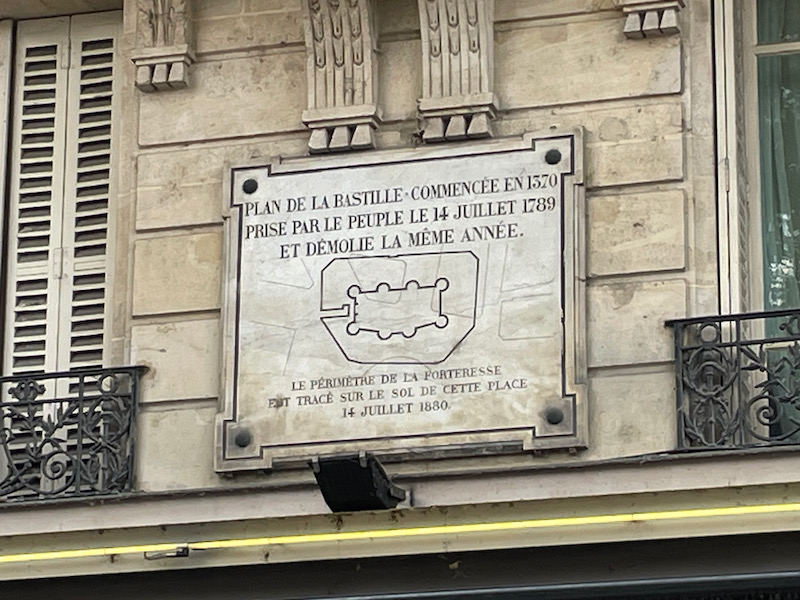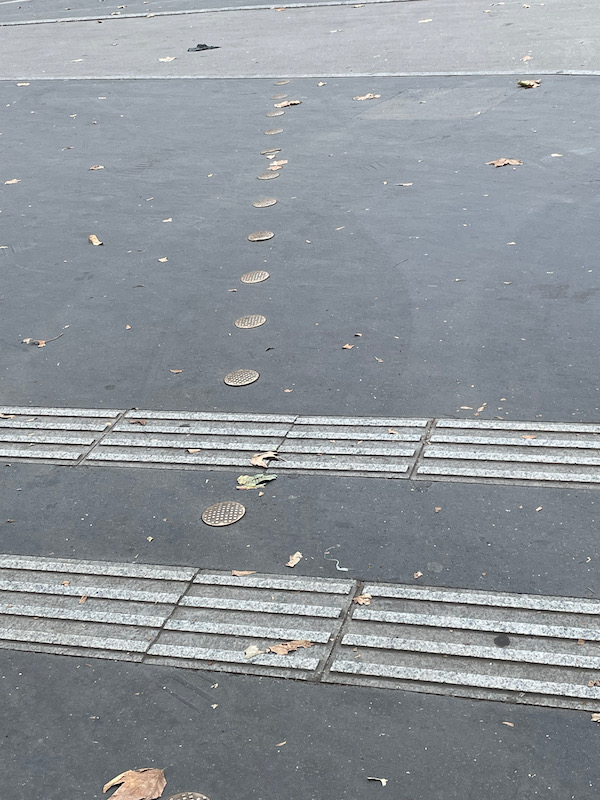Our Blog - Paris Olympics - Day 4
We started out in the Marais district, walking by the Cluny Museum (officially the Museum of the Middle Ages). Its building includes the Roman-era roman baths (the Thermes de Cluny), including a well-preserved frigidarium, and the 15th-century Hôtel de Cluny (the Parisian mansion of the Abbey of Cluny). This first picture is the exterior of the Roman baths portion.
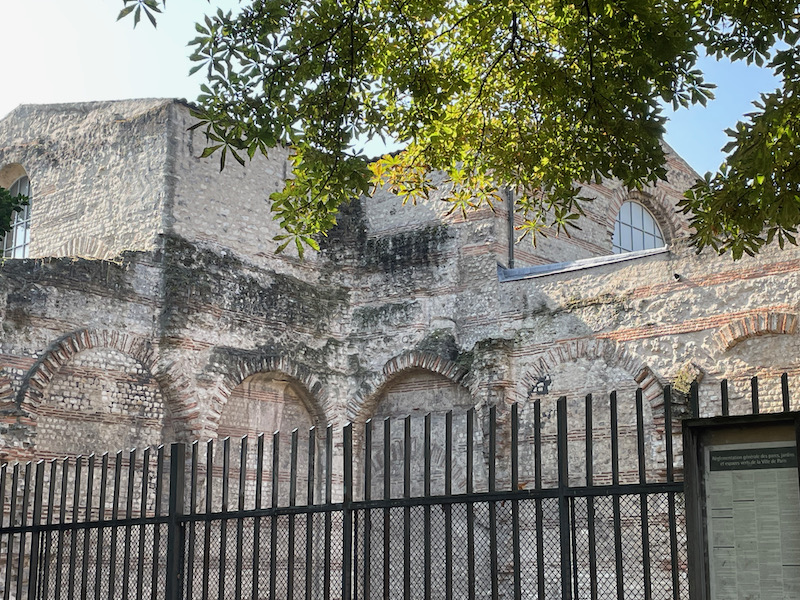
We didn't go inside but headed around to the other side to get a peek at the 15th-century mansion portion. The abbots of the order of Cluny, teaching at the nearby college of Cluny, lived here from the 13th century to the 17th century.
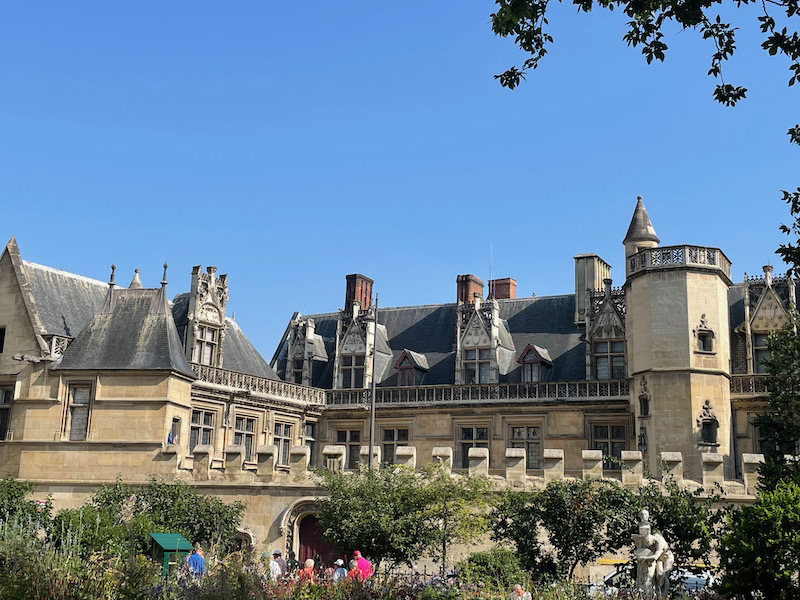
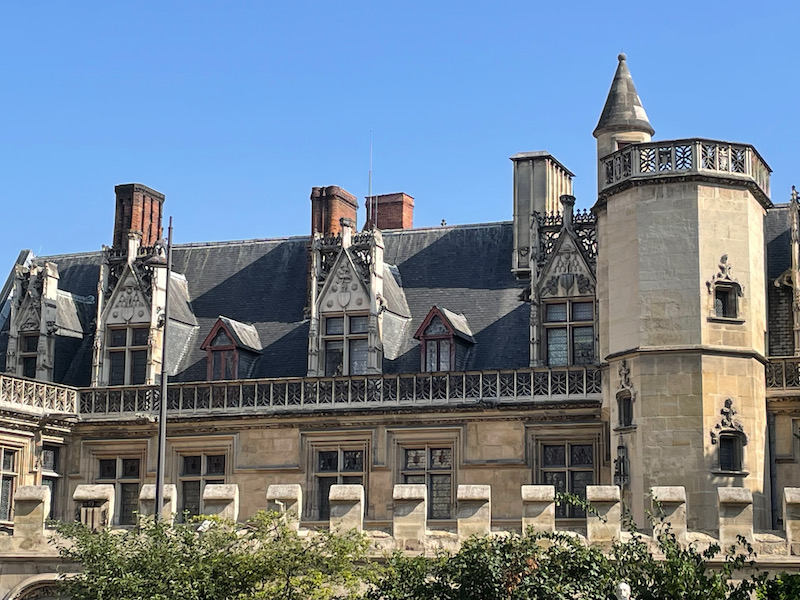
The Sorbonne University dates back to the Middle Ages when, in 1257, the Sorbonne College was established as one of the first universities in Europe. There are various buildings belonging to the Sorbonne in Paris, this one being the Grand Amphithéâtre de la Sorbonne.
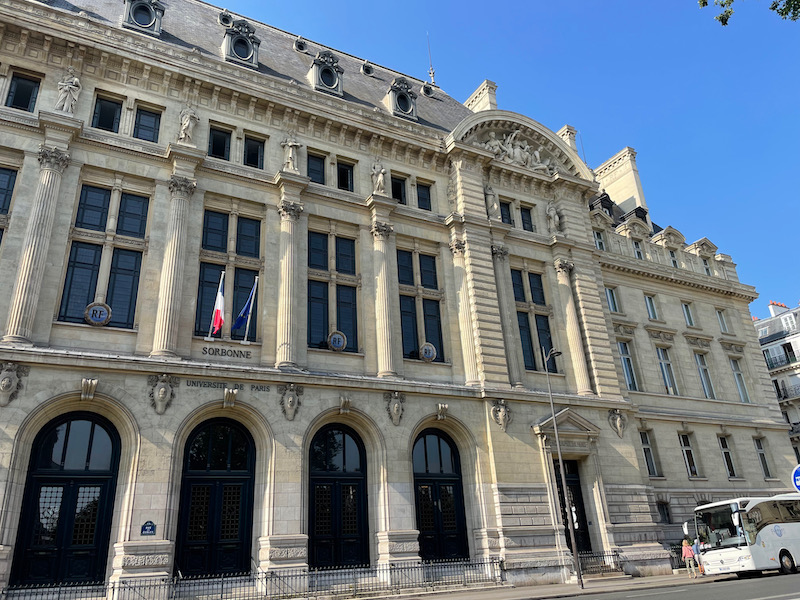
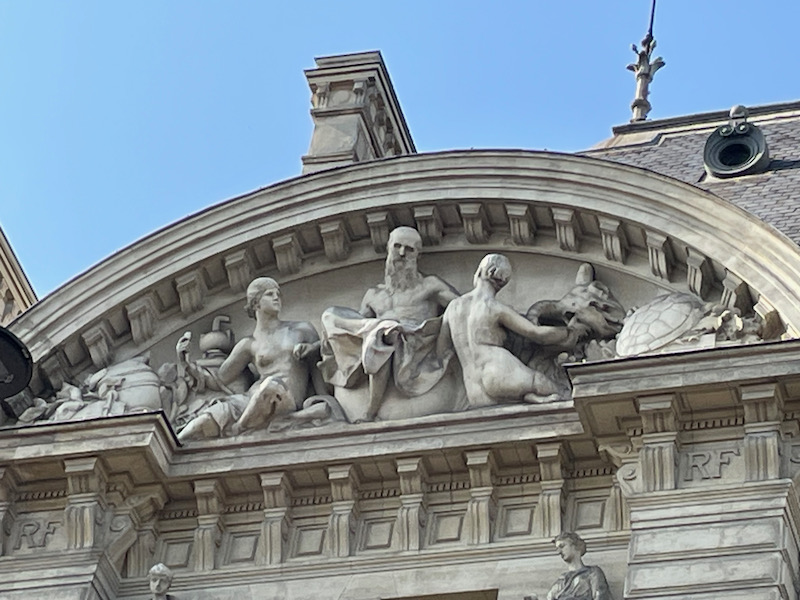
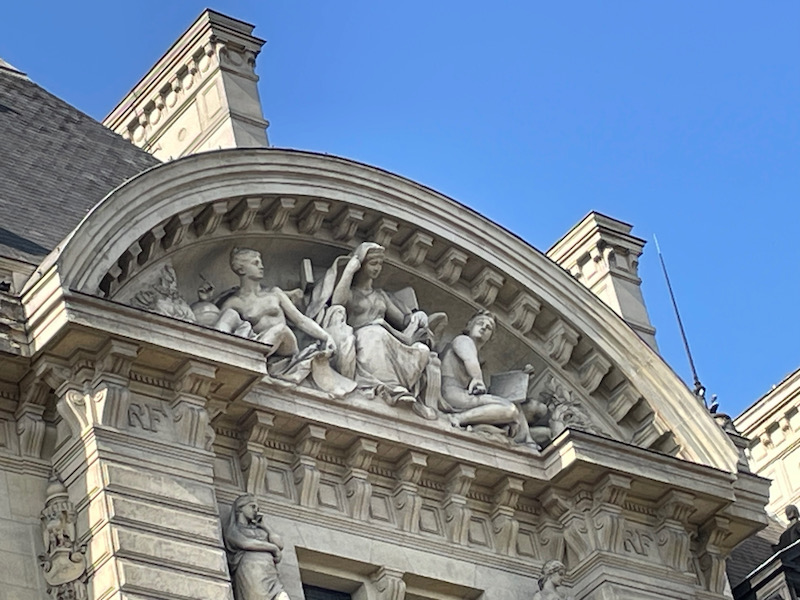
You can see from the sign that this is the Bouillon Camille Chartier, sometimes called the Bouillon Racine because it is on rue Racine. A bouillon is a type of restaurant typically serving traditional French cuisine, including the broth (bouillon) which gives the restaurants the name. The original concept was to serve good quality food, quickly and at affordable prices. The first bouillons appeared in 1854 and many of the restaurants have an Art Nouvelle style. This one was founded in 1906 and the current facade was restored to the original appearance in the 1990s and reopened (it had been used by the Sorbonne from 1962 to 1993). The restaurant that we had lunch at in my Day 1 blog is another "Bouillon" restaurant.
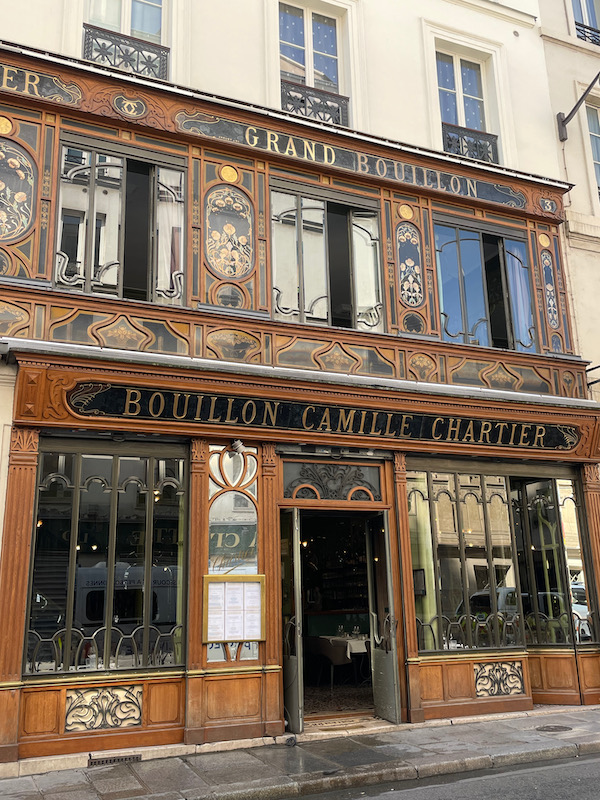
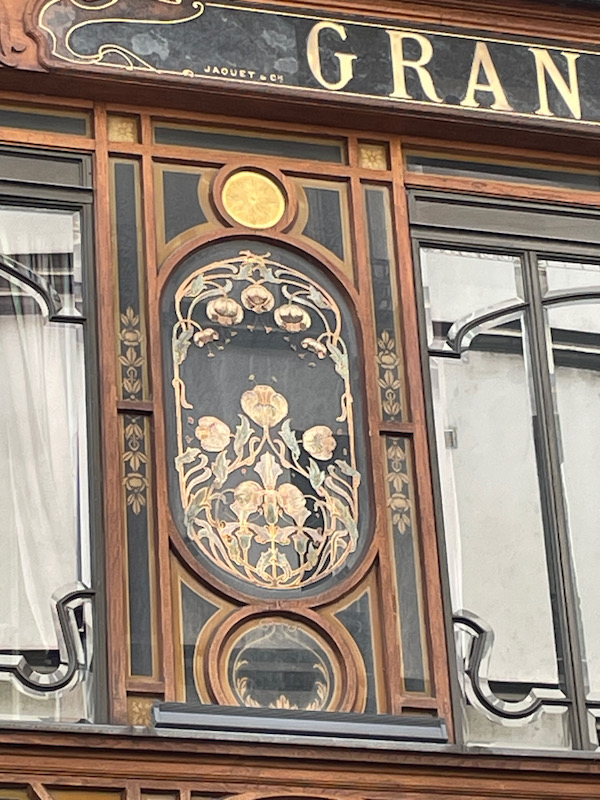
Then down towards the Luxembourg gardens, where we stopped for coffee across from the French Senate building, which is the 17th century Luxembourg Palace. It was built between 1615 and 1645 to be the royal residence of the regent Marie de' Medici, mother of King Louis XIII. In spite of her power and determination, she was unable to create the gardens exactly as she had once envisioned because there was a convent run by a community of Chartreux (Carthusian monks) just south of the palace. This little section at the very end has a sign on the door that indicates that perhaps it was part of the convent/monastery. Looking at various pictures, it has been covered by scaffolding for work since middle of 2017 which must have just come down.
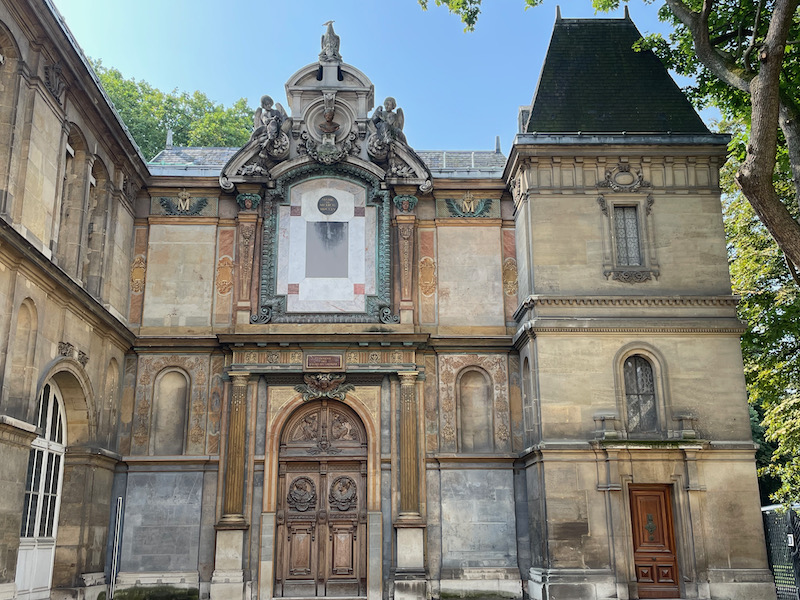
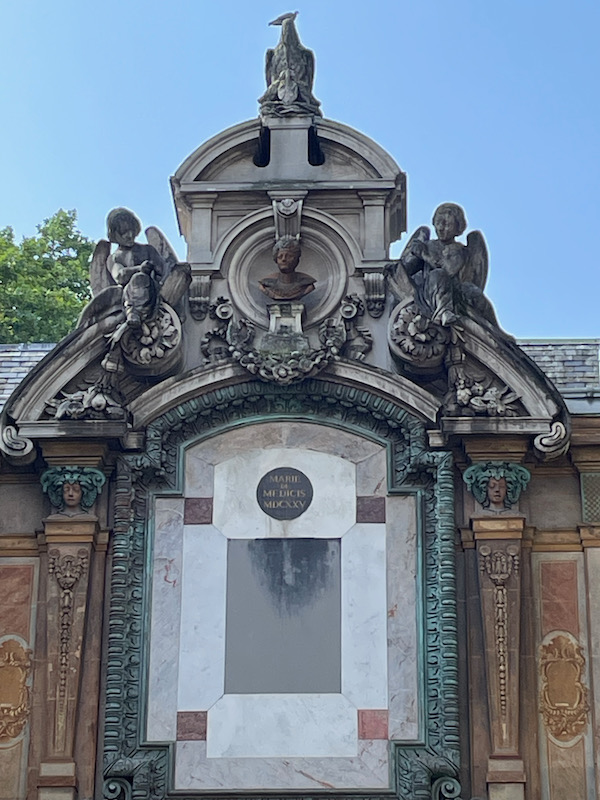
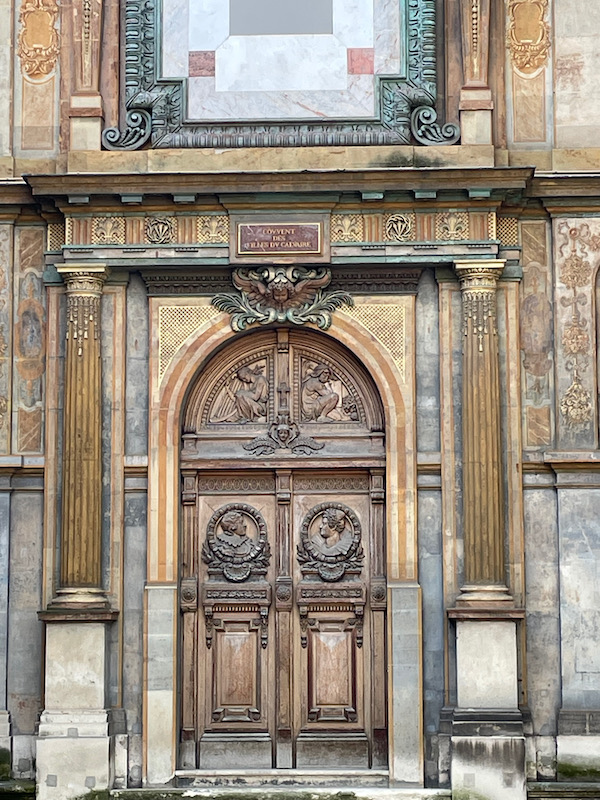
Another place we seem to go to during every visit to Paris is the Île Saint-Louis and the church that is there, named Saint-Louis en l'Île. While Île de la Cité dates back to Roman times, Île Saint-Louis was uninhabited in the early 17th century. When the first houses were built on the island, a parish was created and the first chapel was constructed in 1623. The population grew quite quickly and a new church was needed, which was started in 1664. The outside has 2 quite unique things ... The original bell tower was destroyed by a storm in 1740, and was replaced by a new openwork tower, which allowed the strong winds on the island to pass through. There is also a clock, which hangs over the street like a shop sign.
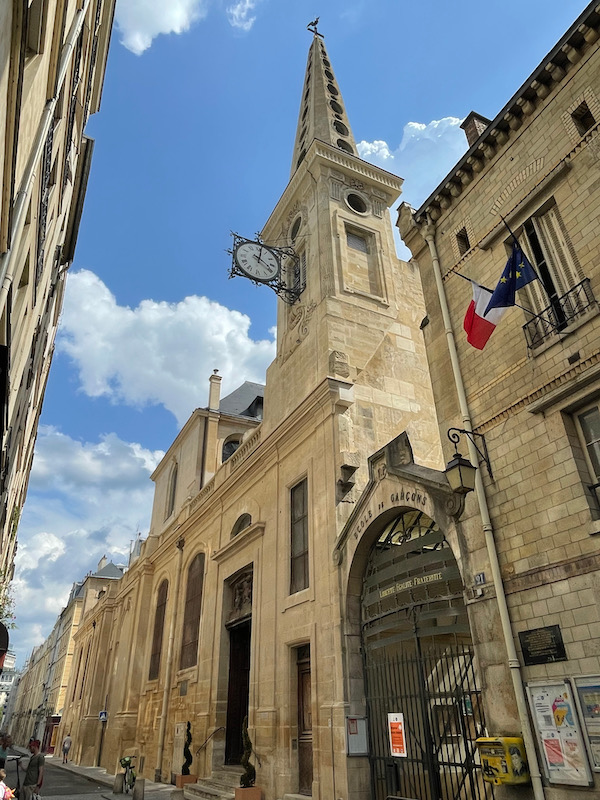
During the French Revolution, the church was closed, stripped of decoration, put up for sale, and turned into a storehouse for books. The buyer of the building returned it to the church in 1805, and the first mass was celebrated there on 10 March 1805 by Pope Pius VII, who had come to Paris the previous December to crown Napoleon Emperor. Just inside the door, there is a statue of Saint-Louis.
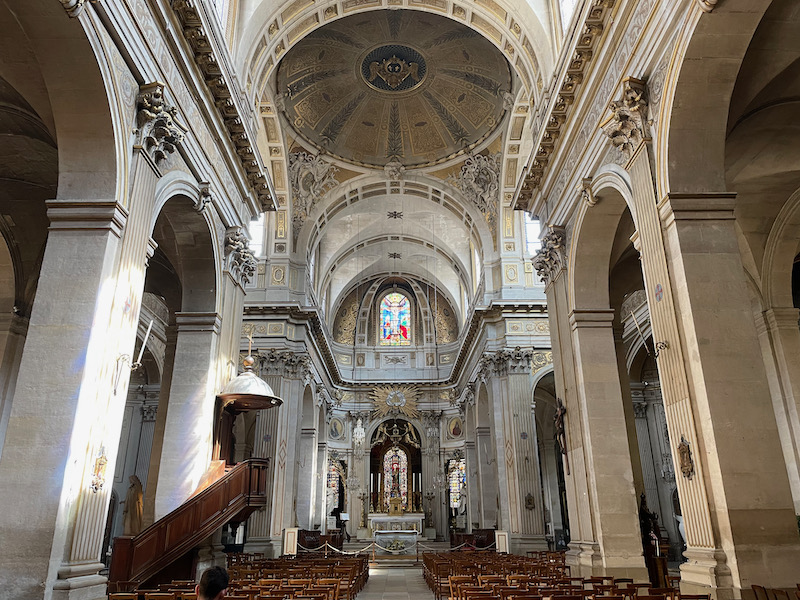
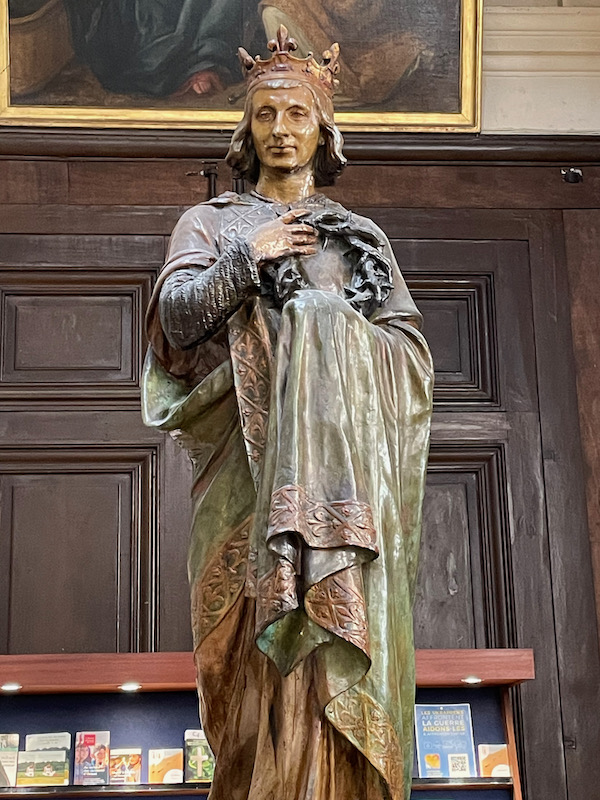
The interior decoration is fairly recent and it has hints of Baroque style to it although a rather modest Baroque.
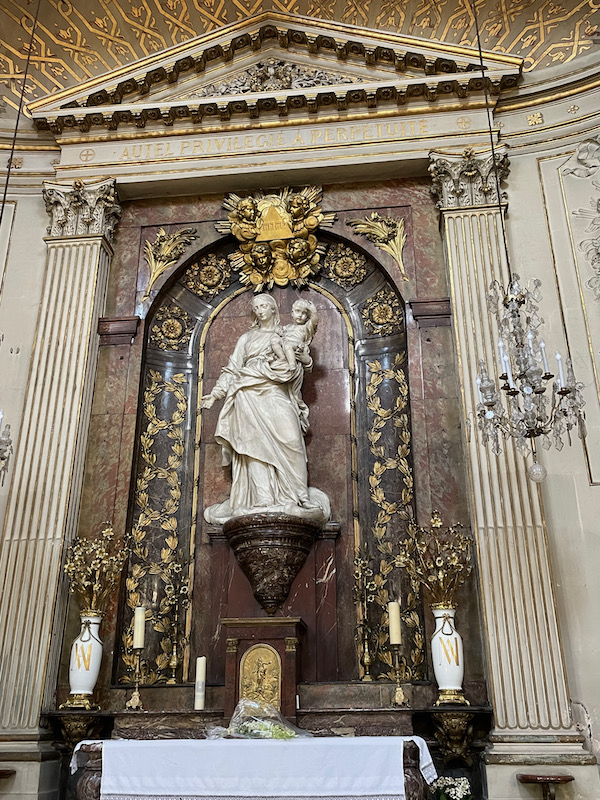
One of the most interesting chapels is the Chapelle de Saint Louis, which is colorfully painted and has a nice stained-glass window from the mid-19th century (1842). Around the large window of Saint-Louis are scenes showing him with the various principles of Justice (1st small circle) and Piety (2nd small circle).
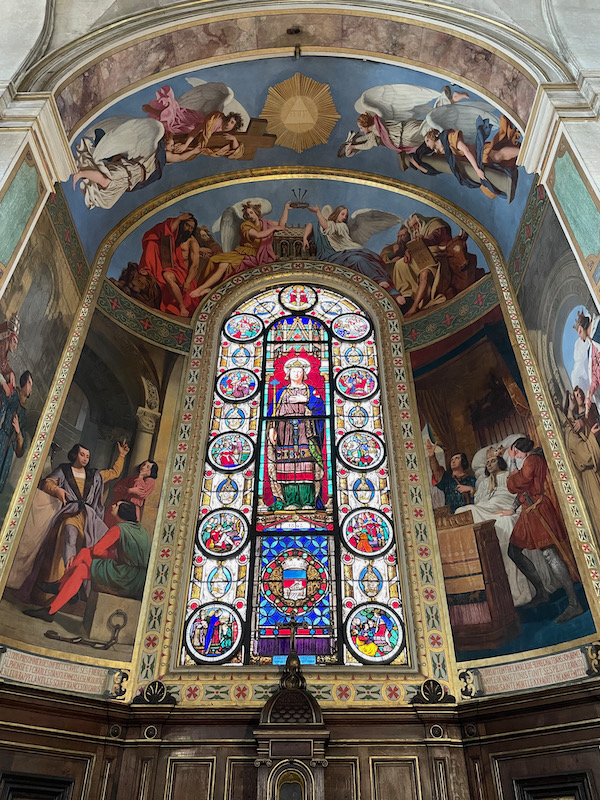
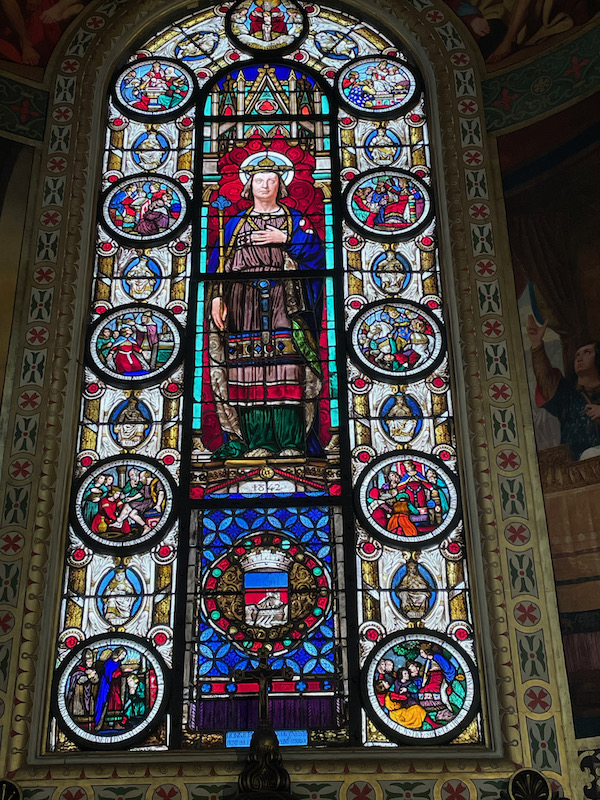
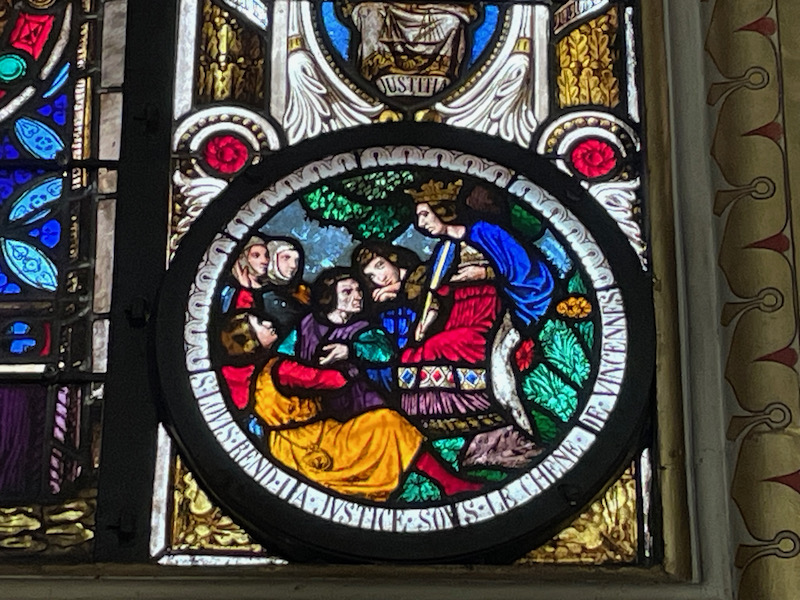
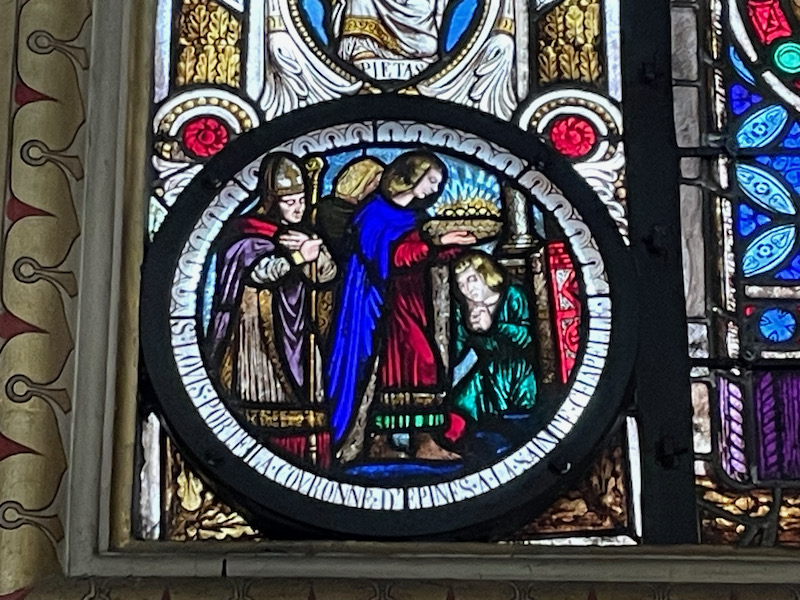
The main altar is a bit less modest, with lots of gold.
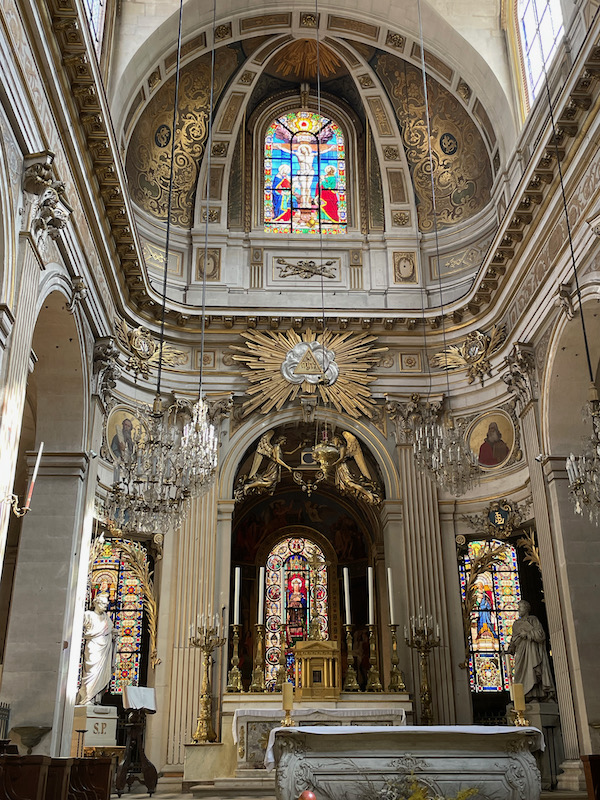
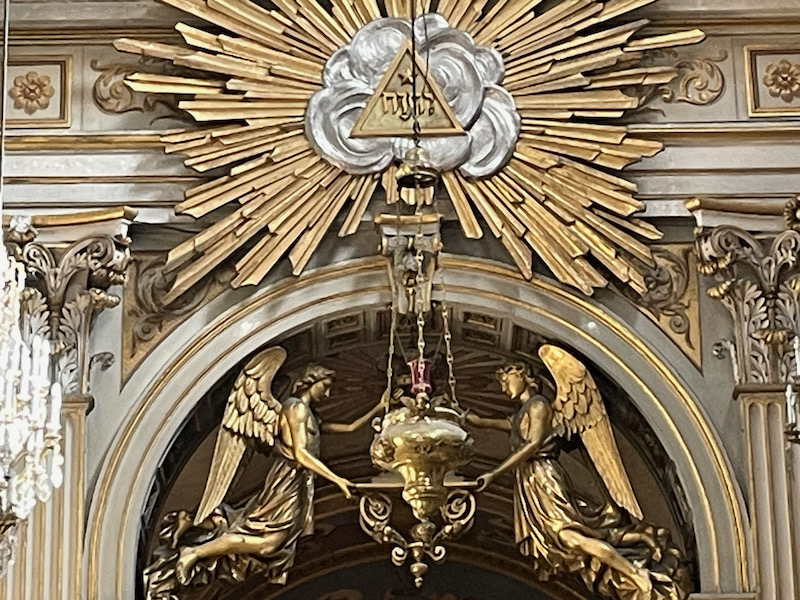
Our last stop was the Place de la Bastille and the July Column, erected between 1835 and 1840 in commemoration of the "2nd French Revolution" in 1830 which led to the fall of Charles X. This paved the way for the July Monarchy and the reign of King Louis-Philippe. At the top is the gilded bronze sculpture, The Genius of Liberty. It represents "Liberty flying away, breaking its chains and sowing light". He is naked, his left foot placed on the sphere, his right leg raised, his wings spread, a star on his forehead. He holds a broken chain in his left hand, and in his right the torch of civilization.
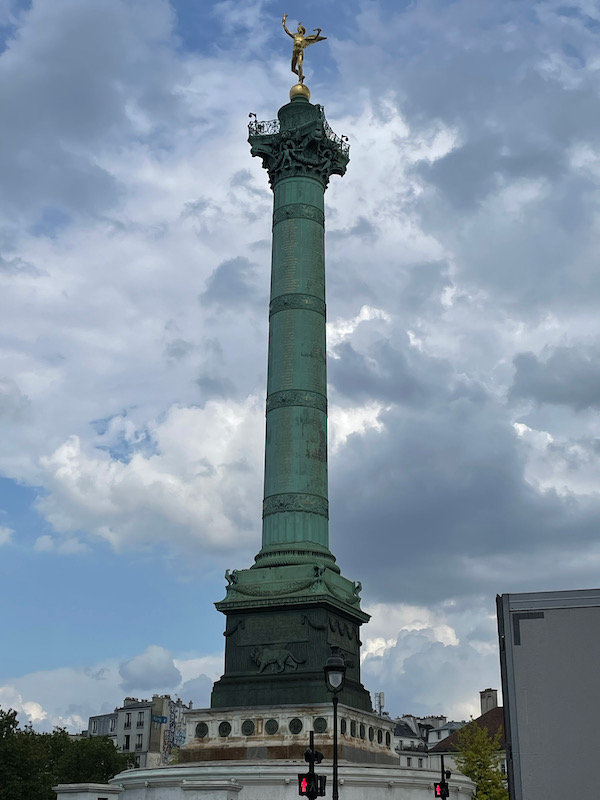
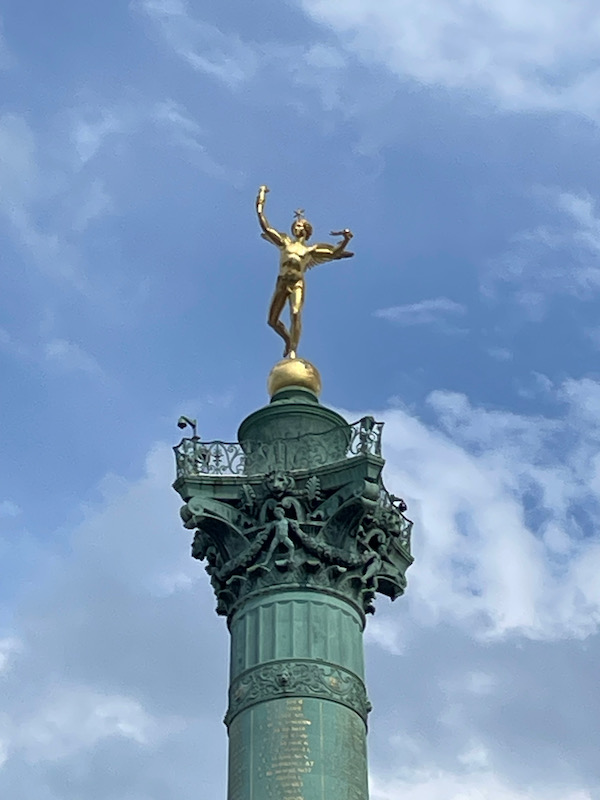
A bit of historical trivia that some people going through the square miss ... there are small circular disks in the square that mark the outline of the Bastille, the prison that was taken by the French people in 1789 (the start of the French Revolution) and demolished the same year.
